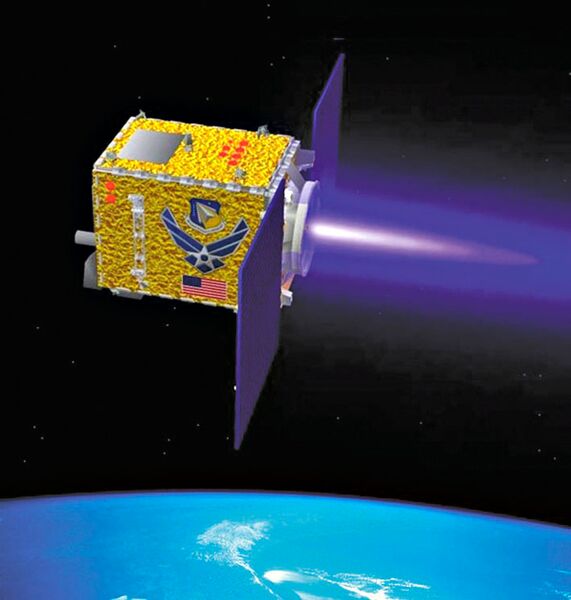
XSS-11 was designed to advance technologies and techniques to increase the level of autonomy, guidance, and safety for microsatellites. However, US officials say it could be used to carry out RPOs as part of an ASAT mission. (USAF research labatory)
The US Space Force (USSF) is looking to industry to provide inputs in support of its efforts to develop an operational architecture for a new slate of satellites and payloads operating at geosynchronous orbit (GEO), according to a 5 March USSF request for information (RFI).
USSF's Space Systems Command Space Domain Awareness and Combat Power (SSC/SZ) directorate is culling industry inputs for the development of “a constellation of free flyer, Rendezvous and Proximity Operations (RPO)” space vehicles (SVs) and associated electro-optic (EO) payloads, the solicitation stated. “The primary objective of this notional multi-SV, replenishable constellation will be to detect, track, and characterise resident space objects” at GEO, it said.
USSF programme officials are focusing solely on SV and payload development for the new RPO constellation, with plans to have the satellites integrated into existing ground stations and associated architecture “within an ... operational unit that currently supports the command-and-control, planning, and data distribution functions to established databases and end-users” within the USSF, the solicitation stated.
To that end, programme officials at the USSF made it clear that industry inputs collected from the 5 March RFI would be geared towards “surveying industry capability” to support RPO constellation development and “determine a pool of vendors that may compete for a classified study” further exploring development options for the new satellites.
The subsequent programme recommendations, gleaned from industry data submitted as part of the RFI, will be rolled into a formal System Concept Review (SCR) led by the USSF, the 5 March solicitation noted.
Looking to read the full article?
Gain unlimited access to Janes news and more...







